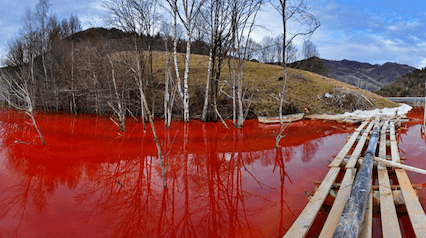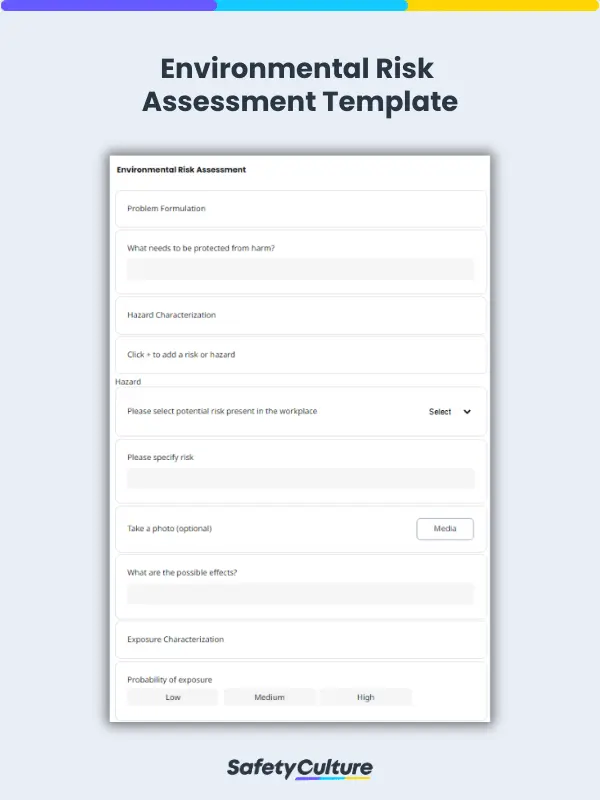What is an Environmental Risk Assessment?
An environmental risk assessment (ERA) identifies potential environmental hazards caused by a business and determines its likelihood or probability to negatively affect various aspects of the environment such as living organisms, natural habitats, and ecosystems. By doing so, organizations are informed and able to take precautions in reducing those risks. Performing an environmental risk assessment also helps a business conform with environmental policies and regulations. In some cases, it has helped determine common hazards from a business such as improper chemical waste disposal, air and water pollution, and soil contamination. Carrying out an environmental risk assessment involves the following 6 steps:
- problem identification;
- hazard characterization;
- exposure characterization;
- risk characterization;
- documenting the assessment and implementing precautions; and
- monitoring at regular intervals.
Why are Environmental Risk Assessments Important?
Environmental risk assessments are important because they help businesses assess how their operations affect the environment so they can mitigate or eliminate any negative impact. Key contributing business activities that are potentially harmful to the environment include improper disposal of chemicals, heavy usage of air polluting equipment and machinery, asbestos handling, soil contamination, and industrial noise. Mining, manufacturing, and construction industries are especially recognized as main contributors to water, air, and soil pollution.
Environmental Risk Assessment Example
Employers should carry out thorough risk assessments and inspections to develop a good Environmental Management System (EMS) and ensure that businesses operate without any contributing factors that may cause harm to the environment. Here’s an example of a business doing just that:
Background:
Some of our processes emit harmful chemicals and pollutants. Parts of the factory are also being renovated or demolished.
What needs to be protected from harm:
We want to protect the nearby community from acquiring any health risks.
Hazard: Asbestos
Probability of Exposure to Hazard: High
Risks:
(1) Asbestosis
(2) Mesothelioma
Severity: Long-term illness
Likelihood: Likely
Risk Rating: High
Control Measures:
Remove any asbestos-containing materials safely. Communicate asbestos hazards to workers. Use proper work practices and controls to limit exposures.
To learn more about how to perform environmental risk assessments, refer to this section of the article and review this environmental risk assessment example PDF.
How is Risk Assessment Used in Environmental Decision Making?
Environmental decision-making is the process of implementing changes based on the risks identified in environmental risk assessment. Though environmental decision-making is often used to refer to the act of creating and/or enforcing environmental laws, the term also applies to actions taken by a business to lessen its environmental impact.
Here are examples of how risk assessment is used in environmental decision-making, based on a publication by the European Environment Agency and adapted to fit a business use case:
- Determine acceptable levels of risk to identify which areas of business operations need the most regulation. Regulation in this context can include adding more enforcers (employees who have been tasked to enforce certain rules or practices) or safeguards against going beyond acceptable levels of risk (such as a notification system when a limit is reached).
- Differentiate environmental risks of tasks, teams, offices, or departments. Environmental risks are unlikely to be the same for the entire business, especially across sites. Performing environmental risk assessments would help the business form specialized strategies for different types of environmental risk.
6 Steps to an Effective Environmental Risk Assessment
Risk managers and policymakers use an environmental risk assessment template to document non-conformance and potential environmental hazards caused by the business.
Here are 6 steps to help you perform an effective Environmental Risk Assessment (ERA):
- Step 1: Problem Formulation – the most critical step where risk managers define the scope of an ERA by identifying what needs to be protected from harm
- Step 2: Hazard Characterization – examining the potential environmental hazards present in the workplace or site
- Step 3: Exposure Characterization – identifying what and who is at risk
- Step 4: Risk Characterization – combining hazard and exposure characterization results and then assessing the risk
- Step 5: Documentation – recording the results of the assessment and implementing precautions
- Step 6: Monitoring – reviewing the assessment at regular intervals



